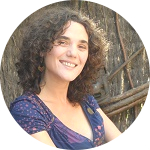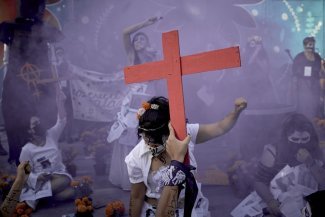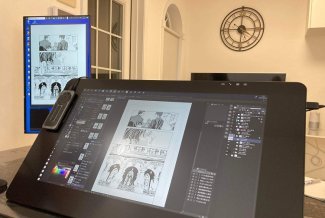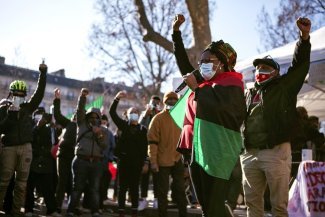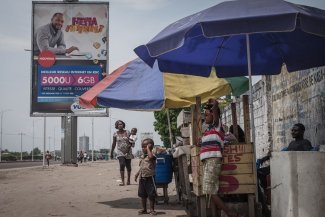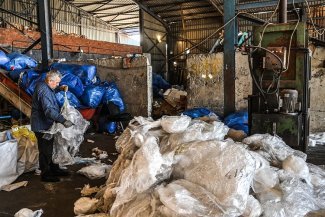Afro-descendant communities in the Pacific region. Colombia has the third largest population of African descent in the Americas.
The civic strike, protests and mobilisations went on for 22 days before the Colombian state gave way and pledged to allocate 1.5 billion Colombian pesos (around US$500 million, €440 million) to compensate for the decades of state neglect in Buenaventura, an industrial and port district with over 400,000 inhabitants, mainly Afro-descendants, in Valle del Cauca on Colombia’s Pacific coast. The funds will be devoted, the government has promised, to building infrastructure in the health, education, drinking water, sanitation and housing sectors.
But the agreement was preceded by violent repression at the hands of the fearsome national anti-riot police, ESMAD, which left 320 people injured. “The civic strike was a peaceful, friendly gathering. Then came the repression at the hands of the ESMAD, and the looting,” denounced the director of Human Rights Watch (HRW) for the Americas, José Miguel Vivanco, on Twitter.
Understanding the recent events in Buenaventura requires a more in-depth look into the Afro-Colombian people’s long history of resistance. As researcher Jaime A. Alves explains in an article for Open Democracy, “Buenaventura is a metaphor for Colombia’s anti-blackness.” The city, where 89 per cent of the population is black, is home to the country’s main port, yet the local people are denied the most basic rights, such as access to clean water, health or education.
“The contrast between the abject black poverty and the thriving port economy of Colombia’s gateway to the world market is insidious…and to complete the scenario, the territorial dispute between a ‘new’ version of paramilitarism [the Bacrim or Bandas Criminales], divides up the city into death zones.”
It has been the scene of macabre murders, as witnessed with the sadly infamous casas de pique, the human slaughterhouses in Buenaventura and other parts of the Colombian Pacific, where neo-paramilitaries tortured and chopped up human beings, whose cries sowed terror across entire neighbourhoods.
Colombia’s Afro-descendant population, largely concentrated in the Pacific and Caribbean regions, has perhaps been the worst victim of the displacements and the massacres perpetrated by the paramilitaries, within the framework of a civil conflict that official discourse reduces to a fight between the Army and the guerrilla, but that is, in fact, much wider in scope.
“There is the anti-union violence, the forced displacements, the illegal use of intelligence, the threats and attacks on land defenders,” explains Dora Lucy Arias, a lawyer with the José Alvear Restrepo Lawyers’ Collective (CCAJAR). “And all of this takes place within the framework of the security doctrines that have permeated Colombia since the beginning of the 20th century and which construct an internal enemy: the campesino, Afro-descendant and indigenous peoples who defend a way of life that represents an obstacle to the progress of extractive megaprojects,” she adds.
Ancestrality versus megaprojects
The current dispute is between two conflicting development models: the mining and energy driven development model alluded to by President Juan Manuel Santos, based on the mining and agribusiness industries, and the traditional way of life advocated by the Afro-descendant, indigenous and small-scale farming communities. It is against this background that “the civil conflict is used as a pretext for legitimising violence,” says Arias. The agreement signed with the FARC (Revolutionary Armed Forces of Colombia) will not ensure peace until the deep-seated causes of the violence are tackled, starting with the outrageous inequality in the distribution of land, insists the lawyer.
For the Black Communities’ Process (PCN), “Territory – not land in the Western sense of an economic good – is a cultural right.” The war that has been tearing Colombia apart for over half a century is, therefore, “the expression of the contradiction between economic interests that see the region as a source of exportable resources and a traditional view based on life”.
In this context, the collective ownership of land “is an instrument the communities can use in the fight to defend their territory,” which is the means for collectively organising a life plan. The collective territories reserved for the black communities are legally established by Law 70 of 1993, which implements one of the rights enshrined in the constitution of 1991, in which the country is declared to be multi-ethnic and multicultural. Rights have been issued for sixty collective territories so far.
Law 70 enshrined the political relevance held since the 1980s by Afro-descendant movements, which, like the PCN, are calling for political autonomy through age-old forms of political organisation, which go back as far as Palenque de San Basilio, one of the first free towns for the slaves fleeing from captivity, founded in Montes de María, in the Caribbean region, in the 17th century.
The incipient Afro-Colombian organising process has, however, been weakened by a range of factors. One of them is the establishment of international agencies such as the IDB, the World Bank, USAID or UN agencies in Colombia’s Pacific region, which has led to the “professionalisation of activism, external dependency” and internal divisions, explained intellectual Agustín Lao-Montes, in an article written on the occasion of the first Autonomous National Congress of Black, Afro-Colombian, Palenquero and Raizal People, in 2013. Another factor is the role played by the state in sowing division amongst indigenous, Afro-descendant and campesino communities.
But the biggest blow to their resistance has been dealt by the brutal paramilitary violence, which led to the displacement of hundreds of thousands of Afro-descendants between the late1990s and the early 2000s. The paramilitaries, sometimes in alliance with business groups, as illustrated by the oil palm case in Chocó, murdered the leaders of local movements, smashed community organising initiatives and sowed terror.
Fear and silence
The stifling of the resistance against oil palms in the Pacific and in Montes de María is archetypal. The fear in Tumaco, on the border with Ecuador, can be measured by the density of the silence. Its inhabitants, mainly Afro-descendants, denounce the state neglect and the growing presence of paramilitaries, the Rastrojos and Águilas Negras, which are not only in control of the drug trafficking trade but also the motorcycle taxis providing transport between cities, as well as the trafficking of petrol brought illegally from Ecuador, as denounced in the report published by the Diocese of Tumaco in 2011, under the heading Que nadie diga que no pasa nada (Let it not be said that nothing is going on).
“The young people here have no horizons or dreams; violence cuts through every aspect of life. People are becoming conformists: there is fear and silence,” laments Luz Mary Rosero, of the PCN. In Tumaco, as in other parts of the Pacific region, there has been a renewed paramilitary onslaught, coinciding with the withdrawal of the FARC.
The silence was preceded by the fight of men and women such as Daira Quiñonez. She, like so many others, had to flee Tumaco, following the assassination of her husband and her mother, and the repeated threats she received for opposing the oil palm plantations. The paramilitaries killed Afro-descendant leaders such as José Arístides Rivera and Yolanda Cerrón.
“More than just a crop, oil palm has been a pretext for taking away people’s land and lives. But many women continue to resist, planting traditional crops: they were always at the heart of the battle,” recalls Quiñonez.
From the cold city of Bogotá, Daira Quiñonez is persevering with her resolve to weave a process of resistance based on the recovery of cultural roots, medicinal plants and spiritual beliefs. Her words are incisive, filled with the authority of someone who has been able to turn pain into strength and injustice into dignity: “The fight is for the land. We must restore the harmony with the land to heal all the impurities generated by this long war. We must sow good ways of life. One day they will understand that we are nothing without the air, without the land. That we are spirit.”



